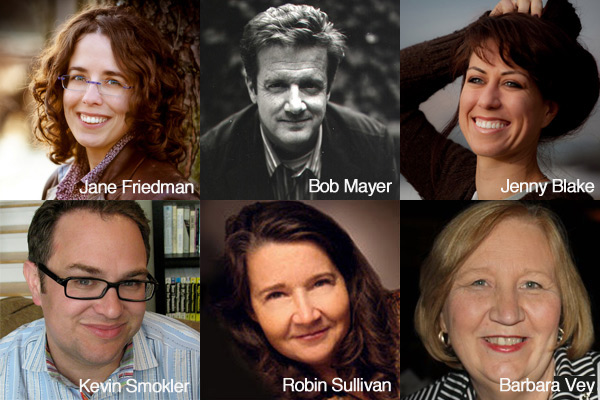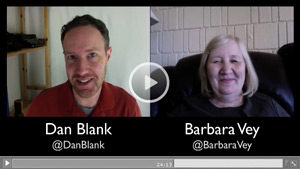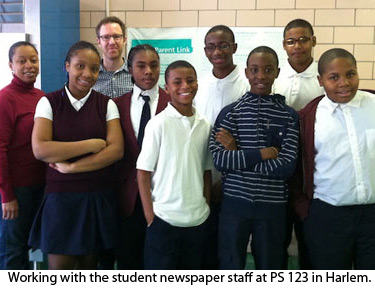Do you ever feel like a commodity? A line item in someone else’s spreadsheet? That sometimes, you are being herded like cattle? Perhaps at work, you have an employee number, one that can be crossed off a list at any moment, as per your employee agreement. Or in our education system, packed into ever larger classes, as schools try to do more with fewer resources. That you are being managed via the bell curve, where it is okay if those at the low and high end are underserved, as long as we shove as many in the middle as possible.
I spend my time obsessing over how we learn, what resources work in education, and how to best help each other build the life and career we want to lead. A core part of my business is teaching, and this Fall I am offering four online classes:
I am also lining up private workshops for publishing clients, and preparing for speaking engagements at conferences. As I develop curricula and classes, I am constantly trying to find the best way to not just share information, but to truly move the needle for writers and publishers in reaching their goals.
Content is not always king.
Let’s say you work in publishing or are a writer, and you want to push your career forward. While information is a part of that, it is not the only ingredient. It is an essential component of a larger process of education and execution. If we judge career development opportunities based on the information alone, we may miss out on the most effective ways to actually learn.
For instance, how many WONDERFUL books sit on your shelf? Books that you mean to read, but can never get around to? Maybe nonfiction books that you have even read – LOVED – but never followed through on in terms of turning that information into action?
Often, we pay for information because the action of PAYMENT feels as though we are doing something. We are throwing precious resources at a problem, and assume that action alone will help ensure results. But it doesn’t.
I spend a lot of time analyzing online classes from a wide range of industries, and have taught hundreds of people this way myself. What I find is that what doesn’t work for in-person education, doesn’t work for online education.
I remember going to Rutgers University, and attending one of those 300 student classes, where there is bleacher seating in a huge auditorium. The professor was a dot in the front of the room, and had to use a microphone. He came in, said stuff, and then left. A teaching assistant hung around for 15 minutes to answer specific questions, but you couldn’t truly interact with the teacher or TA in any extended manner. You had to fight to get to the front, and make the most of your 30 seconds. Imagine trying to have an exploratory conversation with a famous actor as they walk out of a theater on Broadway, with other fans around you. That is what it is like.
Interaction is the key to education for many. Sharing ideas, getting feedback, personalizing the material to suit one’s own goals and challenges. What surprises me is seeing so many courses that offer very little of this. “Information products” have become commonplace on the web: ebooks, webinars, etc.
I am seeing some of them being turned into “courses.” Why the quotes? Because many courses seem to be a workbook chunked out into 8 parts, and delivered once per week. You get a few pages to read through, and then some questions to answer. And that, for the most part, is the sum total of the course. There is a mild amount of interaction – maybe a couple phone calls with 50 people on it, where you may get a chance for one question. These self-study programs work well for some, but my concerns is the education elements that are left out. Delivering information may not be enough.
Interaction is often critical to the education process.
Why? Because it multiplies in exponential ways. Conversations between students and the instructor, between students and each other, between instructor and guest speakers, guest speakers and students, etc. New ideas are constantly flowing as new conversations occur. When we interact, we are exposed to others who have similar challenges, or are doing things wildly different than us. We look beyond our own perceived capabilities and limitations.
Reinforcement is another key component in education.
That each of these things gives you a chance to understand and explore the material in a new way. So when I design courses, I build in different ways of interacting in order to create reinforcement:
- The use of text, images and video in the lessons themselves.
- Direct feedback on homework from me via email, and from other students in the forum.
- Weekly phone calls to discuss the material or ANY topics that the students are struggling with.
- Guest Q&A phone calls, where an outside expert can address students’ questions.
- A private forum that I moderate.
All told, there are 12-16 phone calls per 8-week course. Once the courses end, I offer a mastermind group that the students can join which provides more interaction and access to smart individuals.
So while part of the education process is about delivering information, it is also about maximizing serendipity. This is about what happens when passionate and talented people come together to truly help each other take action. THIS is why I love teaching. Why I love working with students who I feel I learn as much from as they learn from me.
When looking for educational resources for yourself or others, keep this in mind. How are you being treated as a commodity in someone else’s system? How are you given the opportunity to interact, engage, and become a part of something, not just consume a product someone gives you?
Thanks!
-Dan



 "The class was an intensive learning experience. It catapulted me through what would otherwise take years to pick up in bits and pieces."
"The class was an intensive learning experience. It catapulted me through what would otherwise take years to pick up in bits and pieces." "The learning environment is supportive and attentive to individual author’s needs."
"The learning environment is supportive and attentive to individual author’s needs." "Build Your Author Platform opened doors for me that I never would have imagined!"
"Build Your Author Platform opened doors for me that I never would have imagined!"

